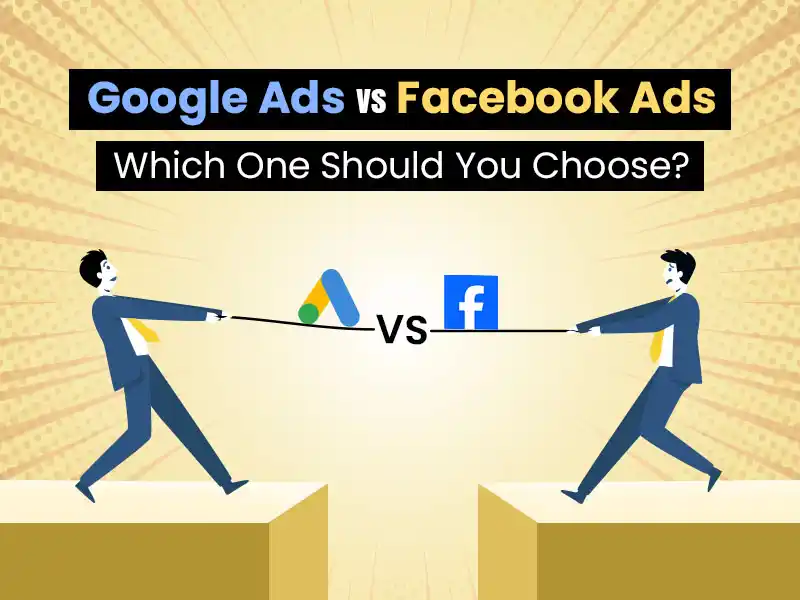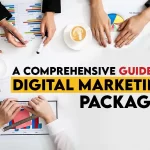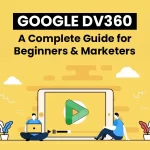If you’re a business trying to scale online, you’ve probably faced the classic question, “Where should you invest your ad budget, Google Ads vs Facebook Ads?”
If you’re here, chances are you’re also confused about it.
As a performance marketing agency, Mumbai, we have worked with startups, D2C brands, and established companies trying to crack this very puzzle. While both platforms offer incredible tools to scale your business, the secret lies in understanding how and when to use them.
So let’s dive into the ultimate face-off: Google Ads vs Facebook Ads, and help you make the smartest move for your business.
Understanding the Basics: Google Ads vs Facebook Ads
Google Ads
Google Ads is an online advertising platform developed by Google that allows businesses to display ads on Google’s search engine results pages (SERPs), YouTube, and its vast network of partner websites (Display Network). Advertisers bid on keywords so their ads appear when users search for specific terms, making it an intent-based advertising platform, perfect for capturing users who are actively looking for a product, service, or solution.
Key Features:
- Keyword targeting,
- Text, display, shopping, and video ads,
- High purchase intent audience,
- Pay-per-click (PPC) model.
Example: A user searching “best digital camera under ₹50,000” is already halfway down the purchase funnel. If your ad shows up here, you’re right in the decision-making moment.
Pros of Google Ads
- High-Intent Targeting: Reaches users who are actively searching for a product or service. Great for driving immediate action.
- Fast Results: Once your campaign is live, you can start getting traffic and conversions almost instantly.
- Advanced Analytics & Conversion Tracking: Integrated with Google Analytics for deep insights into user behavior and ROI.
- Massive Reach: Google handles over 5.9 million searches per minute, giving you access to a global audience.
- Flexible Ad Formats: Search ads, display ads, shopping ads, YouTube video ads, and app install ads.
Cons of Google Ads
- Can Be Expensive: Especially in competitive industries (e.g. insurance, law, real estate) where cost-per-click can skyrocket.
- Curve: Keyword research, bidding strategy, and Quality Score optimization can be complex for beginners.
- Limited Demographic Targeting: Compared to Facebook, Google has fewer options for targeting based on lifestyle or interests.
- Less Visual Appeal: Primarily text-based, except for Display and Shopping campaigns, which may limit brand storytelling.
Facebook Ads
Facebook Ads is a paid social advertising platform that allows businesses to serve targeted ads across Facebook, Instagram, Messenger, and the Meta Audience Network. It uses rich demographic, interest, and behavioral data to reach users based on who they are and what they like, making it an interest-based advertising platform focused on brand discovery and audience engagement.
Key Features:
- Highly detailed audience targeting,
- Visual-first ad formats (images, videos, carousels, reels),
- Ideal for brand storytelling and awareness,
- Cost-effective reach and retargeting.
Example: A visually compelling ad for a new travel backpack might grab a user’s eye while they’re casually browsing, even if they weren’t actively shopping.
Pros of Facebook Ads
- Precise Audience Targeting: Target by age, gender, interests, behaviors, life events, custom audiences, and lookalikes.
- Visually Rich Ad Formats: Videos, images, carousels, collections, and reels make it easy to tell your brand story creatively.
- Cost-Effective: Generally offers lower cost-per-click (CPC) and better ROI for brand awareness and engagement.
- Massive Reach Across Meta Platforms: Ads can run on Facebook, Instagram, Messenger, and Audience Network simultaneously.
- Great for Retargeting: Easily re-engage users who visited your website, viewed products, or engaged with your con
Cons of Facebook Ads
- Low Purchase Intent: Users aren’t actively searching to buy, they’re scrolling. Conversion may take longer or need nurturing.
- Ad Fatigue Can Set In Fast: If your audience keeps seeing the same ad, engagement drops quickly. Frequent creative refreshes are needed.
- Complex Setup for New Users: Pixel installation, event tracking, and custom conversions can be tricky without guidance.
- iOS Privacy Updates: Apple’s tracking restrictions have impacted Facebook’s targeting and attribution capabilities.
Google Ads vs Facebook Ads: A Comparison
| Category | Google Ads | Facebook Ads |
| Platform Type | Search-based, intent-driven advertising | Social-based, interest-driven advertising |
| User Intent | High intent. Users are actively searching for solutions | Low to medium intent. Users are discovering brands while browsing |
| Ad Placements | Google Search, YouTube, Display Network, Gmail, Google Shopping | Facebook, Instagram, Messenger, Audience Network |
| Targeting Options | Keywords, location, device, demographics, remarketing | Interests, behaviors, demographics, custom audiences, lookalikes |
| Ad Formats | Text ads, display banners, video ads, shopping ads | Image ads, video ads, carousel, collection, stories, reels |
| Cost | Typically higher CPC, especially for competitive keywords | Generally lower CPC and CPM; cost-effective for reach and awareness |
| Conversion Potential | High, due to intent-based search behavior | Medium, depends on funnel strategy and creative |
| Visual Appeal | Limited (mostly text-based for Search Ads) | Highly visual; great for storytelling and branding |
| Best For | Capturing demand, high-intent searchers, service-based businesses | Brand awareness, product discovery, visual storytelling |
| Learning Curve | Moderate to high, requires keyword research, bidding strategy | Moderate, creative setup, pixel installation, and audience segmentation |
| Tracking & Analytics | Strong integration with Google Analytics and conversion tracking | Robust engagement metrics, affected by iOS privacy changes |
| Remarketing Capabilities | Strong, especially via Display Network | Excellent, especially with Custom and Lookalike audiences |
| Speed of Results | Fast. Instant visibility for high-intent searches | Fast reach, but may need nurturing to convert |
Key Differences: Google Ads vs Facebook Ads
Choosing between Google Ads vs Facebook Ads comes down to understanding how each platform works at its core, from targeting and cost to creativity and analytics. Here’s a detailed breakdown of the key differences that matter most for your marketing strategy.
Targeting Capabilities: Who Can You Reach?
Google Ads
- Targets users based on keywords, location, device type, time of day, and audience segments.
- Advanced features like Remarketing Lists, In-Market Audiences, and Custom Intent allow you to reach users who are already close to making a decision.
- Best for reaching people who are actively searching for specific products, services, or solutions.
Facebook Ads
- Offers highly granular targeting based on demographics, interests, behaviors, life events, and even custom/lookalike audiences.
- Ideal for reaching users based on their lifestyle, passions, and social behavior, not just search intent.
Cost & ROI: What’s the Smarter Investment?
Google Ads
- Generally comes with a higher cost-per-click (CPC), especially in competitive industries like finance, healthcare, and legal.
- However, users reached via Google Ads often convert faster, thanks to strong purchase intent.
- It’s performance-based, you pay when someone clicks, not just when they see your ad.
Facebook Ads
- Typically has a lower CPC and CPM, making it cost-effective for awareness, engagement, and retargeting.
- Helps build brand trust through repeat visibility and storytelling before a user is ready to buy.
At PaperCraft, we often recommend using Facebook Ads to warm up your audience, build awareness, drive engagement, and then Google Ads to capture and convert that interest when people begin searching for you.
Ad Formats & Creative Freedom
Google Ads
- Search Ads: Text-only, keyword-triggered.
- Display Ads: Visual banners on websites in Google’s Display Network.
- Shopping Ads: Product-focused ads with images, price, and ratings — ideal for e-commerce.
- YouTube Ads: Skippable/non-skippable video ads with vast reach.
Facebook Ads
- Image & Video Ads: For eye-catching brand stories.
- Carousel & Collection Ads: Perfect for showcasing multiple products or features.
- Stories & Reels Ads: High-engagement formats built for mobile users.
- Dynamic Product Ads: Automatically serve relevant products to past website visitors.
If your brand flourishes on visuals and storytelling, Facebook and Instagram are your playground.
Analytics & Optimization: Who Gives You Better Data?
Google Ads
- Seamlessly integrates with Google Analytics, offering deep insights into user journeys, from search to site behavior to conversion.
- Best for tracking complex funnels and measuring ROI in detail.
Facebook Ads
- Delivers powerful engagement metrics; likes, shares, comments, views, and more.
- Great for understanding how people emotionally and socially respond to your brand content.
We love blending the best of both. By combining intent data from Google with engagement signals from Facebook, we craft campaigns that not only perform, they convert, connect, and scale.
Google Ads vs Facebook Ads: What’s the Best Strategy?
There’s no absolute winner in the Google Ads vs Facebook Ads battle, only the right mix for your goals.
At the performance marketing agency, Mumbai, we’ve helped brands across industries find the sweet spot between the two. Whether it’s driving 10x ROI on Google or building viral reach on Instagram, our strategies are built on data, creativity, and constant experimentation.
Conclusion
If you’re just starting out or scaling up, don’t pick platforms based on trends. Pick them based on your audience’s behavior, your business goals, and your budget.
Still unsure where to begin?
Let’s chat. At PaperCraft, we don’t just run ads, we craft performance-driven stories. Whether it’s clicks, conversions, or crazy creative ideas, we help you make every rupee count.
Google Ads vs Facebook Ads? Let us help you choose both, the smart way.
1. Which is better for small businesses: Google Ads vs Facebook Ads?
A: It depends on your business goals. If you want quick conversions from high-intent users, Google Ads is ideal. But if you’re focused on building awareness, growing your social presence, or retargeting visitors, Facebook Ads is a cost-effective and creative option. Many small businesses benefit from using both platforms strategically.
2. Are Google Ads more expensive than Facebook Ads?
A: Generally, yes! Google Ads tend to have a higher cost-per-click (CPC), especially in competitive industries. However, because the audience has stronger purchase intent, the conversion rate may also be higher, making it a smart investment if managed correctly.
3. Can I run Google Ads and Facebook Ads at the same time?
A: Absolutely! In fact, running both together is often the most effective approach. Facebook Ads can generate brand awareness and engagement, while Google Ads can capture search traffic from people already interested in what you offer. A well-synced campaign across both can maximize ROI.
4. Which platform gives better ROI?
A: There’s no specific answer to this. Google Ads might bring faster conversions, but Facebook Ads could deliver better cost-per-lead or customer lifetime value. The best ROI depends on:
Your industry,
Audience behavior,
Ad creatives,
Funnel strategy
That’s why PaperCraft customizes ad strategies based on your unique business objectives.
5. How long does it take to see results from each platform?
A: Google Ads can generate traffic and conversions within hours of launching a campaign, especially for search ads. While, Facebook Ads may take a bit longer, especially if you’re building an audience from scratch, but they often yield better long-term engagement and retargeting opportunities.
6. What kind of businesses benefit most from Google Ads?
A: The following kind of businesses can benefit from Google Ads:
Local services (plumbers, dentists, consultants),
High-intent, urgent needs (emergency repairs, travel bookings),
E-commerce sites (with Google Shopping campaigns),
B2B services with niche keywords.
7. What kind of businesses benefit most from Facebook Ads?
The following kind of businesses can benefit from Google Ads:
D2C brands,
Lifestyle products (fashion, beauty, fitness),
Subscription services and apps,
Restaurants, cafes, and local experiences.
If your offering has visual appeal, a strong brand voice, or impulse-buy potential, Facebook Ads are a winner.
8. I’m based in Mumbai, can PaperCraft help manage both platforms for me?
A: Yes! At PaperCraft, we specialize in building integrated ad strategies across Google Ads, Facebook/Instagram Ads, and more. We focus on performance, not just impressions, helping you turn every click into real, measurable growth.




